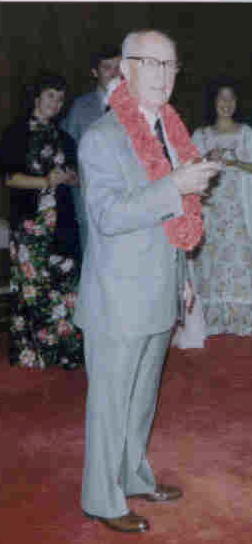
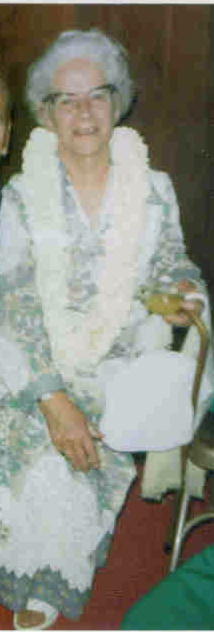
60th Anniversary
ditto
John Bell Condliffe
|
| Bio (below), Bibliography, & Timeline |
 |

|
| John Condliffe 60th Anniversary |
Olive Condliffe ditto |
John Bell Condliffe was a noted international economist and New Zealand historian. Born December 23, 1891, near Melbourne, Australia, he died on the same day 90 years later in Walnut Creek, California, in the USA. His long career spanned several wars and continents, and saw him contribute significant work in public, private, and educational arenas.
* Early Life
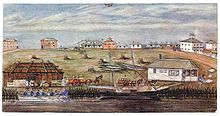 |
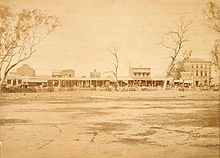 |
|
| The Yarra River, Victoria, Australia | Melbourne, 1840 | Gold Rush Bendigo, 1861 |
Condliffe's earliest years were spent in a very small frontier town, Yarraville on the Yarra River, across from the then-also-small and still-new city of Melbourne (founded 1835) -- and later in the Gold Rush town of Bendigo (founded 1852), further north -- all in the state of Victoria, in Australia.
When the boy was only 7 years old his father Alfred Bell Condliffe, a Staffordshire potter and brickmaker from Halifax in the UK, died when his horse tripped during a ride home from work. Condliffe years later remembered waiting daily at the garden gate for his father to return home, and he distinctly remembered men bringing home the body instead, that day 4.
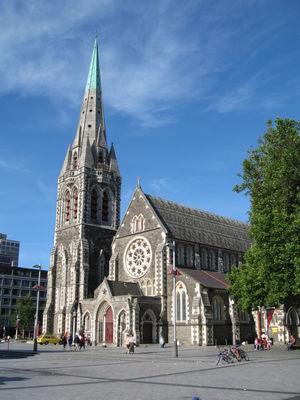
Condliffe's mother Margaret Marley, from Wales, for a time after her husband's death delivered milk from a horse cart donated by the local parish -- he remembered the metal cans, and riding with her on the cart -- then she remarried and in 1904, with her new husband, moved her three sons and his children to Christchurch, New Zealand.
In Christchurch Condliffe attended Opawa School and Christchurch West District High School. Later in life he retained poignant memories of having been one of the impoverished students, in school -- one embarrassed appearance before a disapproving headmaster, who condemned Condliffe's threadbare trousers, left an indelible and formative impression he recalled later on 4.
Condliffe at age 16 took a government job as a customs officer intern, and later as a statistician, while he studied part-time at Canterbury College. The college's Professor James Hight became a mentor, encouraging him to study political economy -- in 1915 Condliffe took his MA, in that subject, and won a senior university prize. His thesis, published in the New Zealand Official Year-book (1915) 7, was "the first systematic account of New Zealand's economic history using trade statistics" 2.
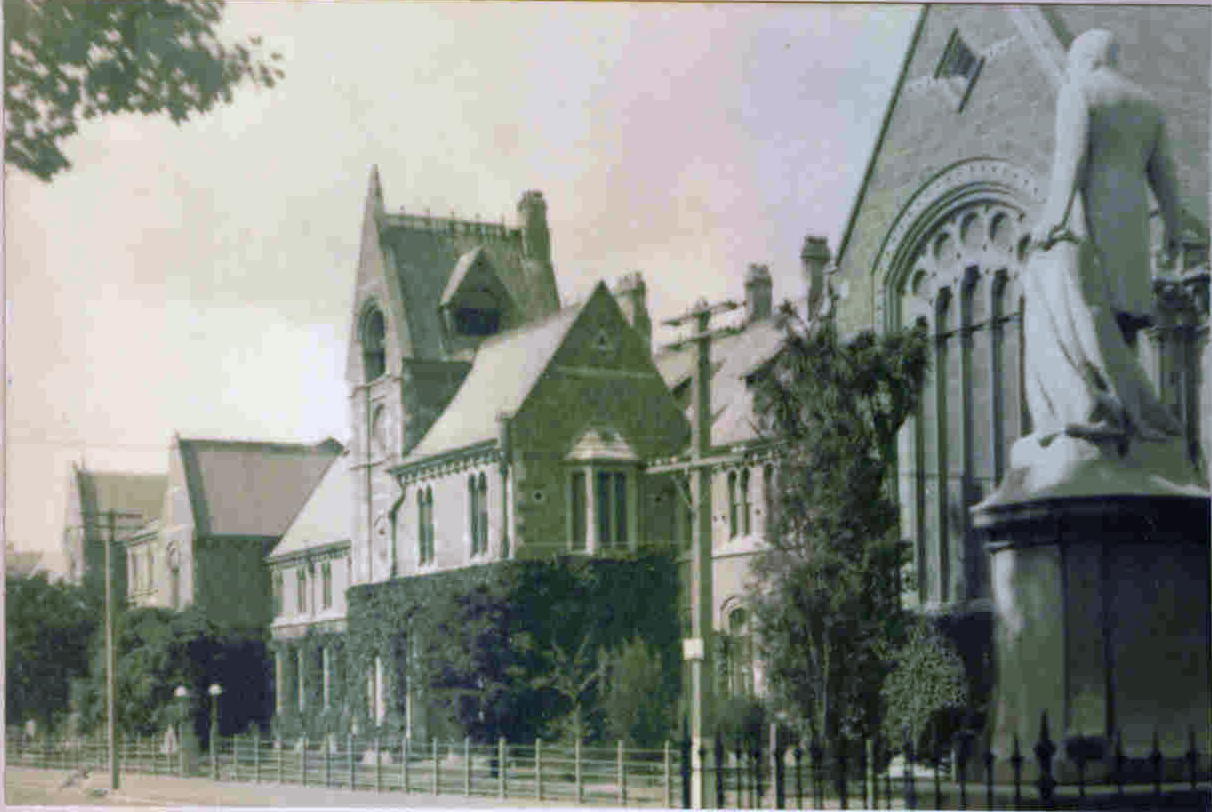 |
| Canterbury College, then |
At college Condliffe worked with Hight to establish the New Zealand branch of the Workers Education Association (WEA): through the WEA he taught economics to future New Zealand Labour Party leaders who became lifelong friends, such as Walter Nash, Peter Fraser, Tim Armstrong, Ted Howard and Harry Holland.
In 1916 Condliffe accepted a lectureship at Canterbury, where he taught statistics, economic geography, constitutional history, economic theory and economic history in addition to his WEA classes 2. That same year he married Olive Grace Mills at Russells Flat, Canterbury, on June 20; they were to have two sons, John and Peter, and a daughter, Margaret.
* The Great War
In late 1916 Condliffe volunteered for the New Zealand Expeditionary Force, which at Gallipoli was combined with Australian troops to form the famous Australian and New Zealand Army Corps (ANZACs). Condliffe himself served at Ypres (Ieper) where in February 1918 he was wounded in one of the earliest chlorine gas attacks, temporarily blinding him and permanently damaging his hearing in one ear.
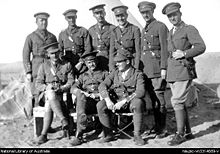 |
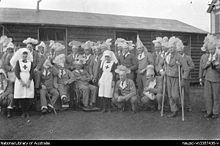
|
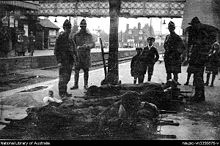 |
| NZEF aka ANZACs | Brockenhurst | NZ wounded |
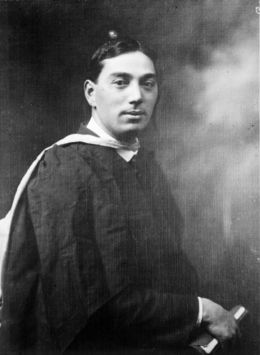
During his wartime hospital recovery at Brockenhurst, in the New Forest in the UK, Condliffe met and became lifelong friends with Sir Peter Buck, the Maori leader Te Rangi Hīroa. Olive first learned that he was "missing in action", and then of his severe injury and hospitalization, via the infamous one-line War Department telegrams: she made the 12,000 mile round-the-world troopship voyage, alone and with a baby, to join him in England.
Recovered, Condliffe taught economics at the New Zealand Convalescent Hospital at Hornchurch, London. In 1919 he received the Sir Thomas Gresham Scholarship 8 to study at Gonville & Caius College, Cambridge. He loved university life, and he attended Keynes' seminar, an experience which reinforced Hight's earlier teaching that economics could solve economic and social problems 2.
.jpg) |
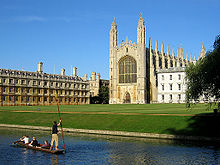 |
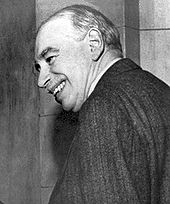 |
| Gonville & Caius College | University of Cambridge | Keynes |
* New Zealand
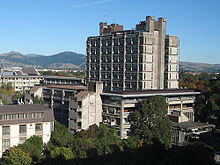 |
| Canterbury now, the Hight Building |
In 1920 Condliffe became professor of economics at Canterbury College (now the University of Canterbury), in Christchurch. His research interest was the New Zealand economy: graduate students such as Horace Belshaw assisted him in "seminal work on the agricultural sector and trade cycles." 2
Condliffe's interest in policy issues led to the formation of monthly speakers' programs at the Canterbury Chamber of Commerce (now the Canterbury Employers' Chamber of Commerce, CECC), at which economists would analyze economic events and policy. 2
Condliffe published A Short History of New Zealand in 1925. He obtained his DSc (Economics) in 1927, for doctoral research on industrial organisation in Asia, and a dissertation entitled Industrial Revolution in the Far East. 1 In 1930 he published New Zealand in the Making, the first economic history of the country.
* The Pacific
In 1925 Condliffe was a member of the New Zealand delegation to the first conference of the Institute of Pacific Relations (IPR). In 1926 he was invited to organise an IPR branch in New Zealand. At the end of that year he became Research Secretary for the entire IPR, based in Hawaii.
The family -- by now he and Olive had three small children -- moved to an old house on a hill above Honolulu, an area then known as Makiki Roundtop. Neighbors and friends included Ralph and Ellen Honda, and the artist Madge Tennent and her husband Hugh, whose Makiki cottage -- now the Tennent Art Foundation Gallery -- was near the Condliffe home.
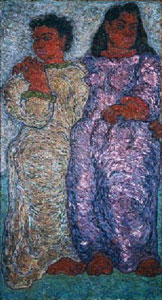 |
| by Madge Tennent |
The Condliffe boys attended Honolulu's famous Punahou School,
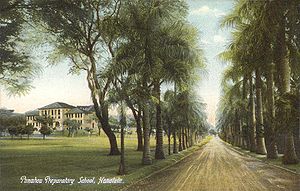 |
| Punahou |
-- and Olive's sister came up from New Zealand to live with them -- she legendarily met her husband Herman there, the pretty girl from Christchurch and the handsome lifeguard, on the beach at Waikiki -- and the entire family had happy memories of swimming among the fish at the Natatorium, the Outrigger Canoe Club, and Diamond Head before its skyscrapers.
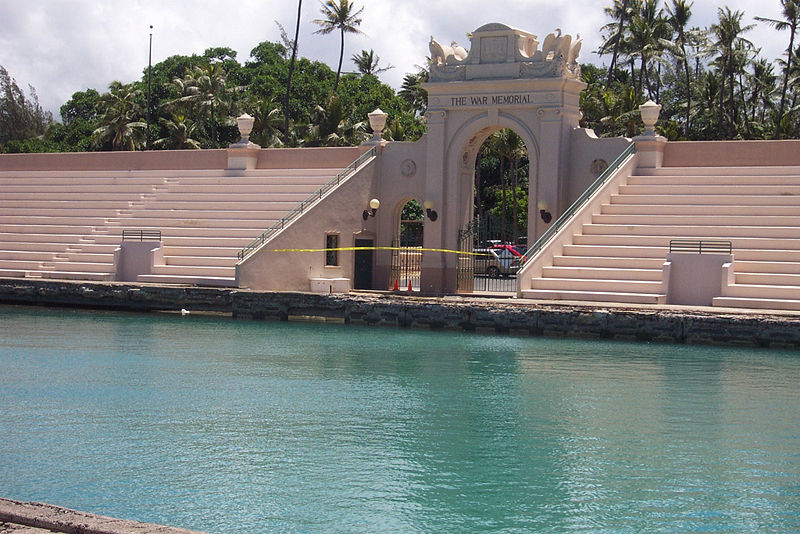 |

|
 |
| The Natatorium, Honolulu | Waikiki | Diamond Head |
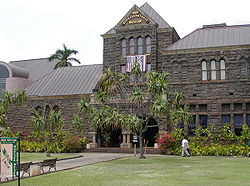
Perhaps best of all for Condliffe himself, in Honolulu, was the presence there of wartime friend Te Rangi Hīroa (Sir Peter Buck), who had become director of the Bishop Museum. Condliffe and Buck spent many hours, in Honolulu, talking of Polynesian anthropology and the to-them rosy future of the Pacific Basin -- both fervently believed the Pacific Ocean soon would become "the eye of the earth", in the phrase of Robinson Jeffers 9 -- as Condliffe would reflect later in his biography of Buck 10, and in his final book, The Eye of the Earth : a Pacific Survey 11.
From Honolulu, Condliffe travelled frequently and extensively throughout China, Japan, Europe and America, organising research projects and conferences on Pacific Basin subjects.
* Europe
In 1931 Condliffe joined the economic secretariat of the League of Nations. He wrote its first World Economic Survey 12, and five others subsequently --
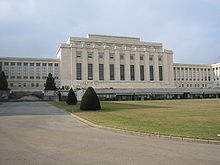 |
| The League of Nations, Geneva |
-- for which he received the Howland Memorial Prize from Yale University in 1939.
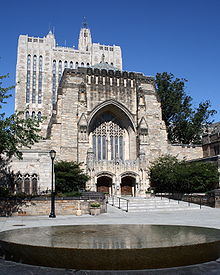 |
| Yale |
The family lived in Geneva's "Old Town", and daughter Margaret attended the then very new -- founded 1924 -- and progressive Ecole Internationale (EcoleInt). Summers were spent on the lake at Annecy, in France --
 |
| The Lac d'Annecy |
-- or high in the Bernese Oberland, at Grindelwald --
 |
| Grindelwald |
Condliffe was an active correpondent -- throughout his life he wrote a constant stream of thoughtful, interesting letters -- frugally using the tiny and folded and pre-stamped and sometimes barely-legible "air letter" forms provided by post offices -- to a wide circle of close friends across the globe.
He would write letters in the evenings, after dinner and in front of the fire, a self-assigned daily task which he greatly enjoyed: a letter to his mother, for as long as she lived, then others to friends from his carefully-arranged correpondence file 3.
Through this regular correspondence Condliffe, "became part of an eminent group of economists who collectively shaped international discussion on trade, monetary order and economic policy in the three decades after 1935. He expounded his view that continued expansion of world trade was a necessary condition for peace and prosperity -- paradoxically, at a time of increasing protectionism." 2
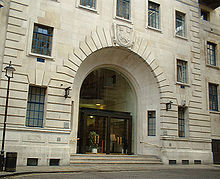
In 1938 he became a lecturer at the London School of Economics. The family moved to a large house, with a large garden -- a colleague held his wedding there -- in Putney, just west of London. Family tours and picnics to the Lake District and Cambridgeshire and other sights in England were frequent: John and Olive had spent their earliest very happy years together there.
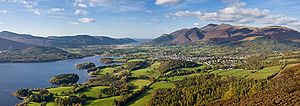 |
| The Lake District, Keswick |
Condliffe remained active, though, in international economic discussions. He prepared background papers for the International Chamber of Commerce congress in Copenhagen (June 1939) and he did research on world trade regulation.
* The USA, and back to The Pacific
In 1939 Condliffe accepted a teaching position at the University of California at Berkeley.
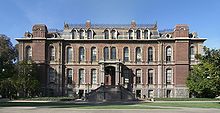 |
| UC Berkeley, Condliffe's first office there |
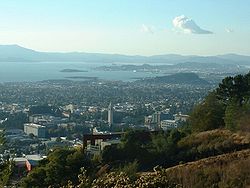
They arrived in New York City in October, after a trans-Atlantic crossing which saw a nearby freighter torpedoed by a German U-boat: on the pier Condliffe's home movies of their ship's rescuing the surviving crew sold for a good price, enabling the purchase of a car for a trans-continental family fling, a drive to see the Grand Canyon -- a childhood dream of his -- and thence to California [3]. Son John had declared an enchantment with Manhattan, upon landing, and stayed there to become a true New Yorker. The rest settled into a comfortable home on Yale Avenue in Kensington, just north of Berkeley. Peter and Margaret attended Berkeley High School, and the university, and John and Olive both became very active in the campus community there.
Condliffe also remained active with the Institute of International Studies at Yale, the Carnegie Endowment for International Peace, the Food and Agricultural Organisation of the United Nations, and the Ford Foundation.
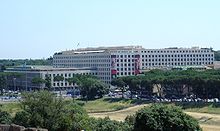 |
||
| The Carnegie Endowment | The F.A.O. | The Ford Foundation |
He was an active member of academic and commercial societies: in San Francisco he joined the Bohemian Club, and the ChitChat Club (see more complete list below), and every year he wore his medals and marched proudly in the ANZAC Parade -- a couple of times alongside labor leader Harry Bridges, whose politics he did not share but whose ANZAC camaraderie he did.
His lifelong interests in economic problems, internationally and in New Zealand, stayed with him in America, though. In 1950 he published his opus magnum, The Commerce of Nations. After a long stay in New Zealand in 1957, he published The Welfare State in New Zealand (1959), and a revision of his New Zealand in the Making.
In 1958 Condliffe retired from the university, and from teaching, but immediately he and Olive flew off to New Delhi for two years, where he became economic advisor to Palamadai Lokanathan's National Council of Applied Economic Research (NCAER), and Olive became active with the All-India Handicrafts Board.
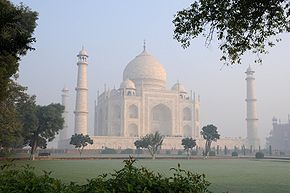 |
| India! |
Among the many memorable and telling stories of their "India Stay" were that of the amused staff at The Claridges New Delhi, who stood by and watched as the ever-fastidious Olive personally scrubbed-down every item of their hotel suite, including the walls and floors, to Jack's great embarrassment -- years later, elderly hotel employees still remembered this -- and the time Jack's eye for statistics, noting anomalies in village census counts, resulted in a personal trip to Assam and Tripura and Nagaland, where he found through personal interviews that local census takers simply "had not been counting the girl babies"... 3
On their return from India, in 1961, Condliffe joined the Stanford Research Institute (SRI), a consulting group specializing in international business, where his "synthesizing" and "report-writing" abilities were highly valued 15 -- he wrote numerous summary reports, for SRI. Throughout his career Condliffe had an uncanny ability -- won through many years of trial and error plus hard discipline, he said -- to sit down and write out a speech or paper or even a book, longhand and using a fountain pen, from start to finish. He would edit and revise extensively; but the first draft was always complete --"The trick is to have your ideas straight before you write," he would advise, "and to know your subject thoroughly." 3
In 1968-9 Jack and Olive journeyed "down under" to Australia once more. He was there, for SRI, to examine the Snowy Mountains Scheme, a major hydro-electric project to capture east coast Australia heavy rainfalls and tunnel them west, under the mountains, to the parched interior where he himself had been a small boy.
| Snowy Mountains Scheme, Australia |
At the same time they visited New Zealand, heard much from old friends there of the country's troubles coping with the declines of Empire and Commonwealth and the Rise of Asia, and Condliffe went home to write an additional report and then a book, on the state of the New Zealand economy and its need for trade liberalization 13.
In 1971 Condliffe completed a biography of his friend Te Rangi Hīroa, Sir Peter Buck 14. And in 1977 he received an honorary knighthood (KCMG) for "services to the Commonwealth".
Condliffe died at Walnut Creek, California, on his 90th birthday in 1981, survived by Olive, two of his children, and numerous grandchildren and great-grandchildren.
* Bibliography
* Associations
* Timeline
* Links
* References
1 UC Berkeley Bancroft Library archival materials on Condliffe: Online Archive of California (OAC), "Guide to the J.B. Condliffe Papers, [ca. 1910 - 1960]", BANC MSS C-B 901
http://www.oac.cdlib.org/findaid/ark:/13030/tf5q2nb1pr/
2 Grant Fleming, "Condliffe, John Bell (1891 - 1981) Economist, university professor, economic consultant", in Dictionary of New Zealand Biography
http://www.dnzb.govt.nz/dnzb/alt_essayBody.asp?essayID=4C28
-- see also, Felicity Price. Building Mainland Business: 150 Years of the Canterbury Employers' Chamber of Commerce (Christchurch, NZ : Canterbury Employers' Chamber of Commerce, 2009) ISBN 978 1 877408 08 3, 978 1 877408 09 0.
3 Personal recollection, Jack Kessler.
4 Condliffe, J.B., "Autobiography" [1973], manuscript.
5 Stanford University Hoover Institution archival materials on Condliffe: Online Archive of California, "Register of the John Bell Condliffe Papers, 1919 - 1975".
http://www.oac.cdlib.org/data/13030/1j/tf2870021j/files/tf2870021j.pdf
6 Calisphere, University of California, "John Bell Condliffe, Economics: Berkeley".
http://content.cdlib.org/view?docId=hb4d5nb20m&doc.view=frames&chunk.id=div00036&toc.depth=1&toc.id=&brand=calisphere
7 The New Zealand official year-book / New Zealand. Statistics New Zealand. , New Zealand. Dept. of Statistics. , New Zealand. Registrar General's Office. , New Zealand. Census and Statistics Department 1893-.
8 The Student's Handbook | to the University and | Colleges of Cambridge | Sixth Edition | Revised to 30 June 1907 | Cambridge | at the University Press | 1907 page 134...
http://books.google.com/books?id=kz04AAAAMAAJ&pg=PA134&lpg=PA134&dq=%22sir+thomas+gresham+scholarship%22&source=bl&ots=Mx5zYkPmRY&sig=Woi8p3G-wekK34WVPUw1MPHwOiY&hl=en&ei=wb6NS6rUFYSQtgPk4qnZCA&sa=X&oi=book_result&ct=result&resnum=1&ved=0CAYQ6AEwAA#v=onepage&q=%22sir%20thomas%20gresham%20scholarship%22&f=false ... ?!
-- or, maybe a little better, http://tinyurl.com/ycrg2ob
9 "The Eye", in Selected Poems / by Robinson Jeffers (New York : Vintage, 1965).
10 Te Rangi Hīroa: the Life of Sir Peter Buck ([Christchurch] : Whitcombe and Tombs, [1971]).
11 The Eye of the Earth : a Pacific Survey / by John B. Condliffe ; edited by Peter G. Condliffe, Michio Yamaoka. (Tokyo : International Academic Printed Co., c2004).
12 World economic survey / Economic Intelligence Service (Geneva : League of Nations, 1932-1944).
13 The economic outlook for New Zealand (Wellington : Whitcombe & Tombs [1969]).
14 Te Rangi Hīroa; the life of Sir Peter Buck ([Christchurch] : Whitcombe and Tombs, [1971]).
15 Personal communications, SRI's Ed Robison and Hoot Gibson.
The legal stuff:
Jack Kessler makes no express warranties or representations and disclaims
all implied warranties regarding any design or content of this webpage or website
or any resources reached using this webpage or website, including any regarding
accuracy, currency, merchantability, or fitness for use. We're just
tryin' our best,
here.
And most of the photos on this site are mine but a few are from Wikimedia Commons, whose GNU License appears below. Website design for me, as some will notice, is sort of like the aphorism "never speak more clearly than you can think" -- to me content is king, and design never should take precedence -- OTOH function does follow form, very often, so I have tried my best, and suggestions on any aspect of this site's design, or discussions of any part of its content, all gratefully will be received, en américain or in English or French or even Spanish, via email to kessler@well.com.
Copyright (c)March 1 2010-, by Jack Kessler, kessler@well.com.
Permission is granted to copy, distribute and/or modify this document
under the terms of the GNU Free Documentation License, Version 1.2
or any later version published by the Free Software Foundation;
with no Invariant Sections, no Front-Cover Texts, and no Back-Cover Texts.
A copy of the license is included in the section entitled "GNU Free Documentation License".
And for anything else here not covered, legally, by the above license etc. -- and you'll have to ask your own "experienced copyright practitioner" lawyer, about that -- please see the following:
Copyright © March 1, 2010-, by Jack Kessler, all rights reserved.
(It's easy to get my permission to copy and distribute the things I write,
if you need it: just ask me -- email address appears below -- generally I
have no objection, so long as my name and email address appear,
but only if I'm asked in advance.)
W3 site maintained at: http://www.well.com/~kessler/
Document maintained by: Jack Kessler, kessler@well.com
Last update: May 20, 2010